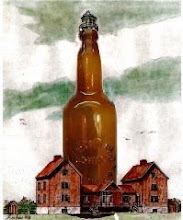emalt- In brewing, hops make the world go around and the fate of that world depends on what happens in the hops fields of Washington, Oregon and Idaho.
Happily, 2016 has been a good year for hops growers,
The United States Department of Agriculture forecasts this year’s production to be about 91 million pounds, an increase of 16 percent from last year. Overall, total planted hop acreage has been steadily rising in recent years into record numbers.
The total numbers are only part of the story, because there are really two sides of the market for hops.
The big guys, such as AB InBev and other large corporate producers, prefer varieties that add bitterness but not any particular flavor or aroma.
And since they buy a lot of hops for their mass production, their needs drove the hops market. Until recently, this kind of production was the most stable market for growers, so these varieties took priority over hops bred for their aroma.
But craft beer makers want hops that add bitterness, aroma and complex flavors. Now, there are enough craft brewers who want aroma hops and other experimental varieties so hops growers feel confident that they have a steady market for them.
This is a major relief for small and newly established breweries that don’t have bulk purchasing power or long-term contracts for their hops supplies.
And it’s great news for beer drinkers.
The increased production of new hops varieties has let brewers expand the diversity of flavors in their hoppy beers.
There are many India Pale Ales coming out showcasing particular types of hops.
One currently popular variety, Mosaic, released in 2012, is featured in Founders Mosaic Promise and Prairie Funky Gold Mosaic. It adds a complex assortment of flavors (a mosaic, if you will) reminiscent of grass and fruits like tangerines and berries.
An interesting case of an almost extinct variety of hops making a comeback is Comet. It was bred in 1974 for bittering, but was abandoned in the early ’80s as other hops surpassed its bittering potential.
Now, it’s being rediscovered for its interesting aroma, which is a mixture of citrus fruit and grass. In some ways, it is reminiscent of wild hops that grow in the western part of the United States.
Soon, we probably will see some Comet IPAs showing up in stores and bars soon.
Thanks to the desire of brewers to experiment, hops growers have of late been releasing small quantities of experimental hops varieties onto the market to gauge brewer interest.
Some will disappear again never to be heard from — sometimes for good reason — but others will probably go on to be the next hot variety of hops.
Thursday, September 15, 2016
Subscribe to:
Post Comments (Atom)



No comments:
Post a Comment